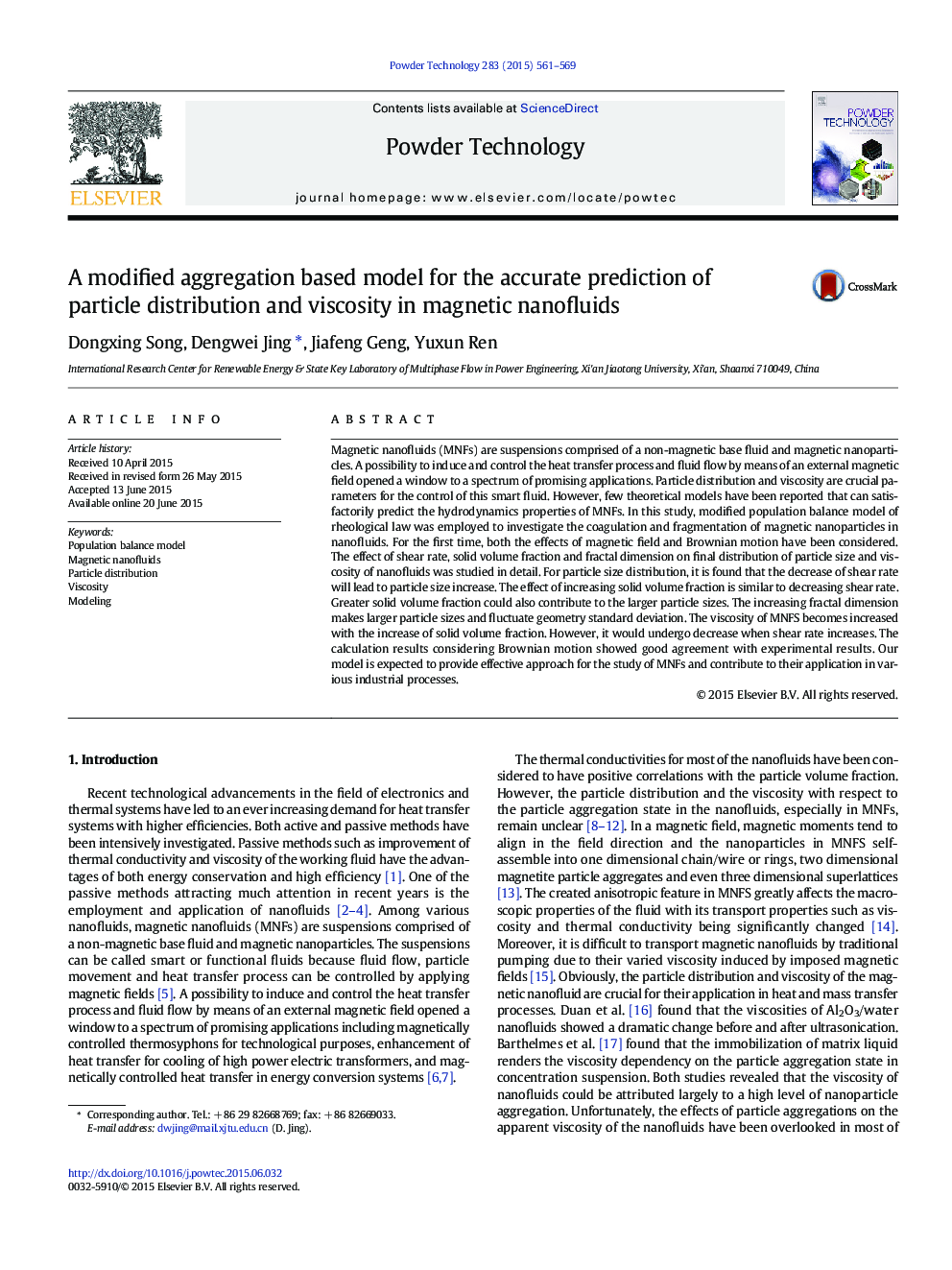| کد مقاله | کد نشریه | سال انتشار | مقاله انگلیسی | نسخه تمام متن |
|---|---|---|---|---|
| 235445 | 465635 | 2015 | 9 صفحه PDF | دانلود رایگان |
• A modified aggregation based population balance model has been developed.
• Both the effects of magnetic field and Brownian motion have been considered.
• Particle distribution and viscosity of the magnetic nanofluids can be well predicted.
• The model is applicable to both nanofluids with or without external magnetic field.
Magnetic nanofluids (MNFs) are suspensions comprised of a non-magnetic base fluid and magnetic nanoparticles. A possibility to induce and control the heat transfer process and fluid flow by means of an external magnetic field opened a window to a spectrum of promising applications. Particle distribution and viscosity are crucial parameters for the control of this smart fluid. However, few theoretical models have been reported that can satisfactorily predict the hydrodynamics properties of MNFs. In this study, modified population balance model of rheological law was employed to investigate the coagulation and fragmentation of magnetic nanoparticles in nanofluids. For the first time, both the effects of magnetic field and Brownian motion have been considered. The effect of shear rate, solid volume fraction and fractal dimension on final distribution of particle size and viscosity of nanofluids was studied in detail. For particle size distribution, it is found that the decrease of shear rate will lead to particle size increase. The effect of increasing solid volume fraction is similar to decreasing shear rate. Greater solid volume fraction could also contribute to the larger particle sizes. The increasing fractal dimension makes larger particle sizes and fluctuate geometry standard deviation. The viscosity of MNFS becomes increased with the increase of solid volume fraction. However, it would undergo decrease when shear rate increases. The calculation results considering Brownian motion showed good agreement with experimental results. Our model is expected to provide effective approach for the study of MNFs and contribute to their application in various industrial processes.
Figure optionsDownload as PowerPoint slide
Journal: Powder Technology - Volume 283, October 2015, Pages 561–569
